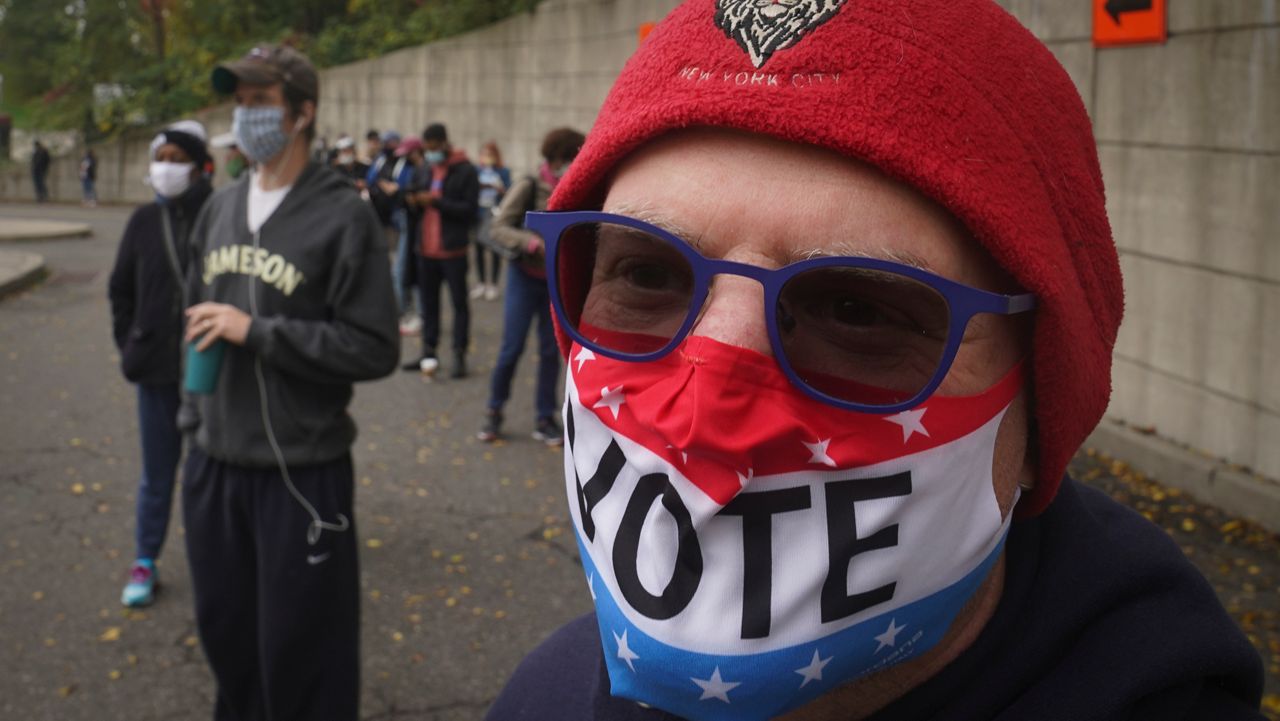It’s cliche at this point to say this is an Election Day like no other, given the coronavirus pandemic and the general sense of urgency for those on both sides of a bitterly divided nation.
But in New York, this is a very unusual day, too: more than 2.5 million New Yorkers have already cast their ballots in the first year early voting has been held in a presidential election year. There are millions of absentee ballots that have been sent to voters. The outcome of many races potentially won’t be certain for days or even weeks after today.
We know Joe Biden will carry New York. But that's about all the certainty there is today.
New York was badly battered by a pandemic that has killed tens of thousands of people since March and now is seemingly on the upswing in parts of the state.
The economic recovery has been sluggish, unemployment finally slipped below 10% in September for the first time since April, the lights on Broadway are still off.
Protests and demonstrations over police brutality have thrown into relief stark disparities and racial inequalities, but also a defense of policing in a state known in the past for taking a hardline on criminal justice.
How are New York voters processing this all?
Here are three things to watch for in New York as we settle into the final day of voting:
The battleground House seats
New York is a blue state, but it is also home to a handful of swing districts that in the past have helped decide who controls the House of Representatives.
This year two of those swing districts are in upstate New York.
In the 24th district in central New York, Republican Rep. John Katko is fending off another challenge from Democrat Dana Balter. Katko has managed to hold onto the Syracuse-area House seat after it changed hands between Democratic and Republican officeholders reliably each term.
But this is a district President Donald Trump lost in 2016 and the district is seen as a top opportunity by Democrats this fall.
In the next-door 22nd district, Democratic Rep. Anthony Brindisi is also facing a rematch against Republican former Rep. Claudia Tenney.
This race is nearly a mirror image of the 24th district. Brindisi is a freshman defending a seat he won two years ago, defeating Tenney in a district Trump easily won in 2016.
There are also key districts on Long Island, where Democrat Jackie Gordon is facing off against Republican Andrew Garbarino for an open seat vacated by Republican Rep. Peter King. On Staten Island, Democratic incumbent Max Rose faces Republican Nicole Malliotakis in a staunchly pro-Trump district.
Democratic turnout in a Democratic state is expected to be heavy this year, but it remains to be seen just how strong Joe Biden’s coattails can be in New York.
Several of these races could be true cliffhangers after today given the amount of absentee ballots this year.
The state Senate’s supermajority
Democrats in the state Senate are two seats away from a majority that could be just as dominate as the party’s control of the state Assembly.
A supermajority would enable Democrats in the chamber to override any gubernatorial vetoes, an intriguing prospect for progressives eager to assert their agenda against Cuomo. The governor, for his part, has argued it’s moot since his agenda has been aligned with what legislative Democrats want.
Still, in a coming year that’s expected to be one of the more difficult budgets in a decade, the veto override could be a potent weapon for the Legislature — that’s assuming they have the votes.
The Democratic conference in the Senate could have a far more upstate flavor to it next year: The party hopes to win seats in Buffalo and Rochester as well as expand in the Hudson Valley.
Some of the long Island incumbents who helped turn the Senate blue two years ago, meanwhile, are facing uphill re-election fights.
Billionaire Ron Lauder has taken a sudden interest in the state Senate, spending heavily in a handful of races that if successful would not tip the balance of the chamber, but make the margin all the more narrow for Democrats.
Even talking about a supermajority for the Senate seems like a reversal of fortune for a conference that had spent an unhappy two-year term in the majority and then saw its hopes for control dashed by an alliance between Senate Republicans and a faction of Democrats.
The 2018 wave year for Democrats changed that.
Minor party drama
New York’s minor parties are facing a challenge to their survival this election year as a new law requires parties to receive at least 130,000 votes at the top of its ticket or 2 percent of all votes cast. The previous threshold was 50,000 votes for gubernatorial candidates.
This change, paired with a system of public funding for political campaigns, came after the progressive Working Families Party initially endorsed Gov. Andrew Cuomo’s rival for the Democratic nomination in 2018, Cynthia Nixon.
The state’s minor party ballot lines have done some unusual things this election year. New York Green Party activist Howie Hawkins, a former gubernatorial candidate who has cleared the 50,000 vote threshold in the past, is the party’s national nominee for president.
The Independence Party has nominated Brock Pierce, a bitcoin millionaire and former child actor.
And the true target of the higher threshold, the Working Families Party, has brought out an array of prominent New York Democrats ranging from Sen. Chuck Schumer to Rep. Alexandria Ocasio-Cortez to urge voters to vote for the Joe Biden-Kamala Harris ticket on the WFP line.
A party not meeting the threshold will lead to them losing their ballot status and their enrolled voters being informed they have to switch their party identification. To gain it back, parties have to go through a laborious petitioning process.



